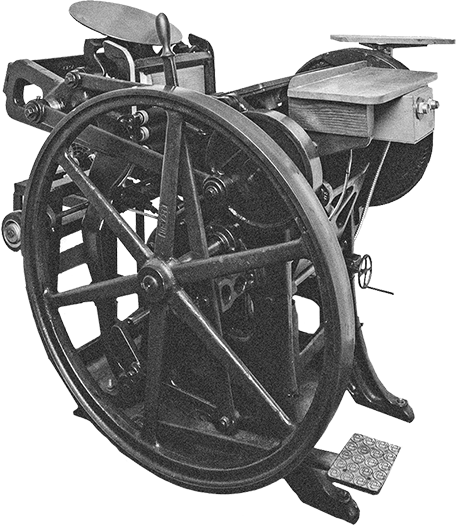The Difference Between Font and Typeface
by Claire Green -Terminology surrounding typography has morphed and found its place in our modern day vernacular. The terms "typeface" and "font" are used interchangeably today, but how did we get there?
Have you ever wondered if a font is the same thing as a typeface? Or is typeface just a term that historians and academics use? Maybe one refers to digital media and the other to analog? The simple answer is that they do have different meanings, but since the term “font” is so widely used and misused, it doesn't really matter anymore (unless you're a type designer, then it matters). If you're curious what the difference is and don't mind a little print history, read on, it's actually pretty simple!
A typeface is a particular set of glyphs or sorts (an alphabet and its corresponding accessories such as numerals and punctuation) that share a common design. For example, Helvetica is a well known typeface. A font is a particular set of glyphs within a typeface. So, 12 point Helvetica is a font, and 10 point Helvetica is a separate font. The same goes for different weights – a 14 point Helvetica Bold is a different font than a 14 pt Helvetica Light. They are different fonts, but the same typeface.
 Two examples of font comparisons from the A. D. Farmer & Son Type Founding Co. Specimen Catalog in 1900.
Two examples of font comparisons from the A. D. Farmer & Son Type Founding Co. Specimen Catalog in 1900.
The reason for this distinction isn't as important today as it was historically when a page of text was set by hand before printing, and meticulous organization of thousands of small pieces of metal was essential. For centuries, a printer or typesetter would set type letter by letter from a type case. The type was stored in shallow wooden drawers, called job cases, that were divided into small compartments for each letter, numeral, ligature, punctuation mark, and varying widths of spacing. In the United States, the most popular style of type case was the California Job Case, where the layout of glyphs was organized so that a typesetter would be able to quickly find the correct glyph from memory, just like typing on a keyboard (but slower). Older styles of type cases organized the capital letters in a separate case from the minuscules. The capital letter case was placed above the drawer of minuscules, which is where we get the terms “uppercase” and “lowercase.” We also get the idiom "mind your p’s and q’s" from hand typesetting, since metal type displays the letters backwards, it was common to mistake p’s for q’s and vice versa. Saying “I’m all out of sorts” harkens back to the metal typesetters’ world: once you run out of a sort (also called a glyph) such as an “r” you have to get cReative about rewording the Rest of the text on your page spRead!
 Regular vs. California Job Cases
Regular vs. California Job Cases
Because a font was in a job case of its own, apart from the other sizes and weights in its family, using the term “font” had a distinct meaning from the word “typeface.” You can imagine that keeping the job cases well organized into fonts was paramount to a typesetter – mixing up fonts in a single drawer would cause much frustration and lost time if it wasn't noticed until printing a proof!
 Claire is setting metal type for letterpress printing from a California Job Case.
Claire is setting metal type for letterpress printing from a California Job Case.
When typing a letter in Microsoft Word, it makes sense to use the term font, since you're composing your document one font at a time (even if you use multiple fonts in that letter). With desktop publishing, the general public became introduced to the term font, rather than typeface, and it became more or less synonymous with typeface. At Hoban Press, we like to keep things printerly and use the word typeface, but feel free to use whichever term you prefer, we won't hold it against you!

Thanks for Reading!
We not only love writing about letterpress, typography, and design – we're printers ourselves! We've chosen to carry on the tradition of letterpress printing by offering beautifully pre-designed cards at affordable prices.